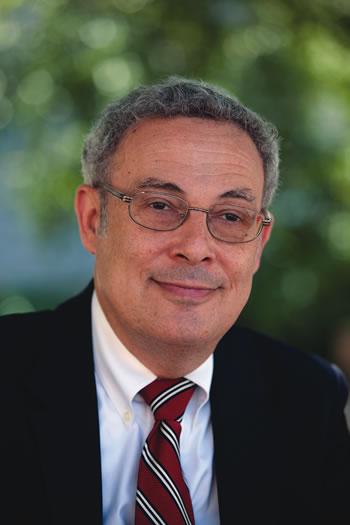Provost's Perspective
Transcending Traditional disciplines

By Neil Weissman
While drafting Strategic Plan III (SP III) and preparing our self-study report for the college’s upcoming accreditation review, we have spent a good deal of time identifying distinctive dimensions of our academic program. You have likely heard a good deal about some of these, such as global education and our emerging focus on sustainability. Another important dimension of our curriculum that figures large in documents like SP III but that has been less widely publicized is Dickinson’s unusual strength in interdisciplinary study.
A full understanding of the college’s achievement in this area does not come easily. For starters, the term can be difficult to define. Ask faculty, and you may find yourself immersed in important but at times arcane discussions of the differences among “interdisciplinary,” “multidisciplinary” and “transdisciplinary” programs, not to mention interdisciplinary elements within traditional disciplines. Moreover, a growing number of colleges and universities boast strong interdisciplinary programming, even though in reality this part of the curriculum usually is accorded second-class citizenship. Interdisciplinary offerings elsewhere often lack full departmental status, dedicated faculty positions, facilities or even substantial budgets.
Not so at Dickinson. One need only look at some numbers to see why. (Regarding the knotty definitional issue, let’s simply use “interdisciplinary” to signify programs that range across borders of traditional liberal-arts disciplines.) In 2011, 45 percent (or 258) of our graduating seniors had interdisciplinary majors. These included Africana studies; American studies; archaeology; biochemistry & molecular biology; classical studies; East Asian studies; environmental science/ environmental studies; international studies (IS); international business & management (IB&M); Italian studies; Judaic studies; Latin American, Latino & Caribbean studies; law & policy; medieval & early modern studies; Middle East studies; policy management; and women’s & gender studies. Three of these (IB&M, IS and American studies) were among the 10 most popular majors.
Faculty statistics are no less impressive. More than 50 of our professors have full or partial appointments to these programs; the total of additional faculty who contribute is nearly 170. There is of course some double counting here; many faculty participate in several programs. But that also speaks to the vitality of the interdisciplinary impulse. And all of this data excludes our interdisciplinary minors—film studies and linguistics—and our new certificate programs in health studies and security studies. In sharp distinction to practice at other colleges, our interdisciplinary majors often have full departmental status with dedicated faculty positions, facilities and budgets. Moreover, they have added support from such strongly interdisciplinary entities as the Community Studies Center, The Clarke Forum for Contemporary Issues and the Center for Sustainability Education.
Why is this important? As our self-study states, “We see interdisciplinary fields as important vehicles for newly emerging knowledge and understandings. Interdisciplinary work reflects the growing complexity of the world; our students must be able to synthesize knowledge from multiple fields in order to engage with the problems and issues of the 21st century.” In other words, interdisciplinary fields, like biochemistry & molecular biology or neuroscience, are places where a disproportionate amount of innovative work in the academic world is taking place. And interdisciplinary programs model engagement with contemporary challenges, since they typically require insights from many disciplines to understand and solve. These programs underline Dickinson’s commitment to a spirit of inquiry and emphasis on a broadly useful education in the liberal arts.
Of course, our “traditional” disciplines do these things as well. In this regard, the ease with which we have integrated interdisciplinary programs into the inherited discipline-based curriculum speaks to another distinctive element of our academic program—the remarkable commitment of our faculty to combining the best of the liberal-arts tradition with new perspectives and approaches. This openness and vitality help guarantee our students a deeply meaningful and timely academic experience.
Published April 3, 2012